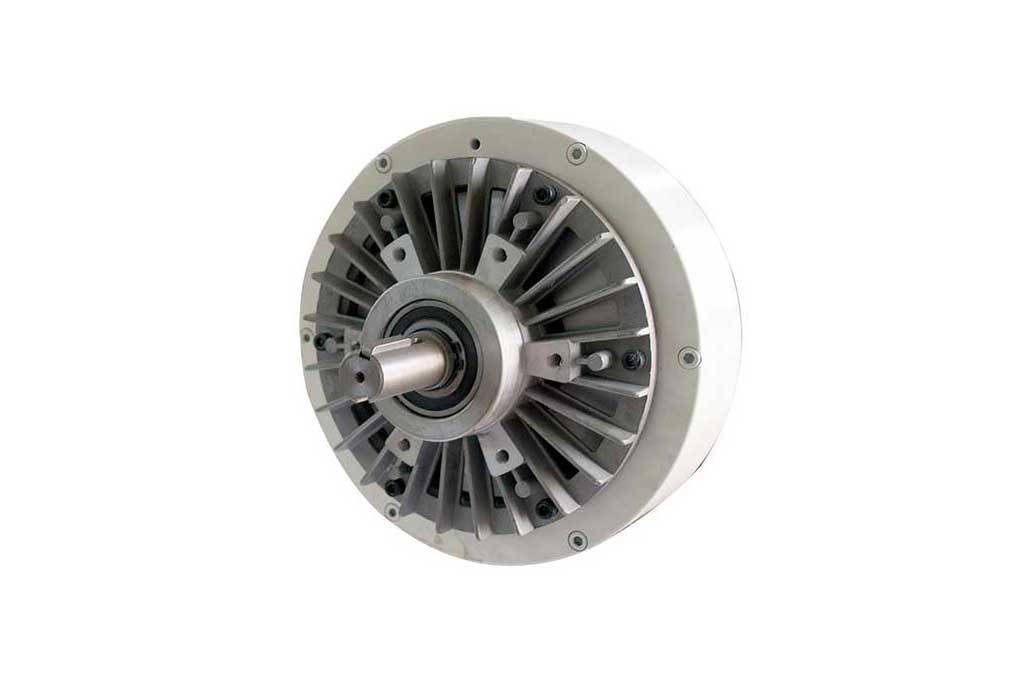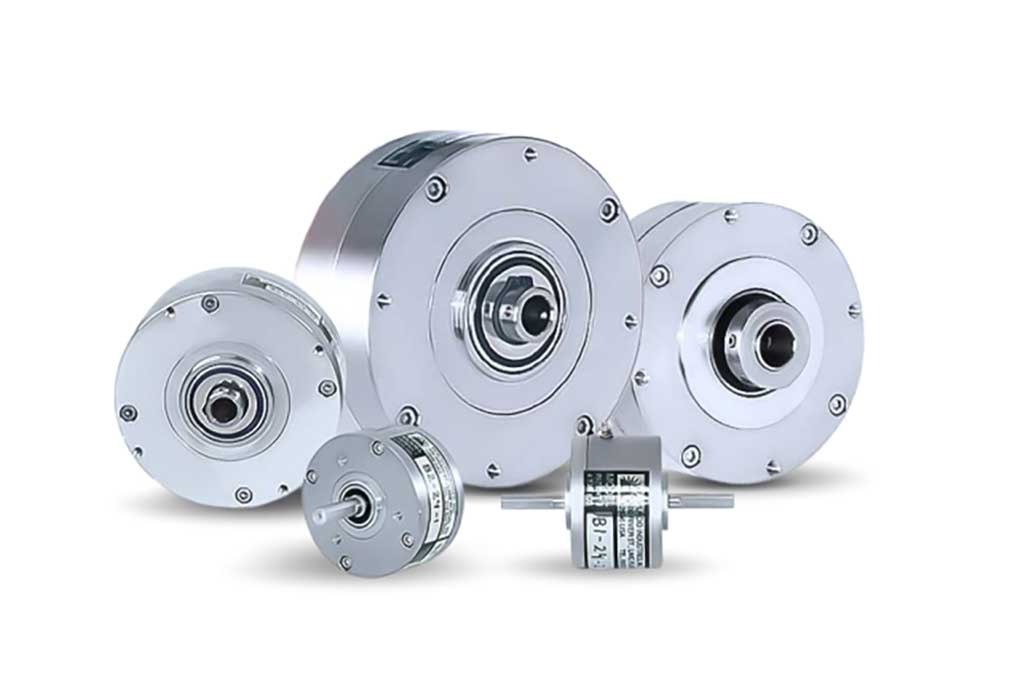Magnetic Particle Brakes and Hysteresis Brakes are typically used for torque and tension control.
Three Basic Characteristics between of Magnetic Particle Brakes vs Hysteresis Brakes
Unlike Hysteresis Brakes, magnetic particle brakes have a free flowing metal powder in the air gap. When a magnetic particle brake is energized, the particles form chains along the magnetic field lines linking the rotor to the housing. As the rotor rotates, the chains continuously shear, generating torque and heat. While magnetic particle brakes are capable of producing high torque, the friction between the particles can result in poor stability and repeatability, along with a high residual drag.
The basic characteristics of magnetic particle and hysteresis brakes are very similar:
- Torque is proportional to input current and independent of speed.
- The torque characteristics of both brakes exhibit hysteresis, which means the torque vs input current graph has two lines; one for increasing input current from zero, and another for decreasing input current from 100%;
- Torque can be anywhere between these two lines if the current changes from increasing to decreasing (or vice versa) when not at 0 or 100% input current.


How to Choosing?
The best choice for you depends on the details of your application and often either type brakes will work fine. However in some cases one type is better and sometimes one type will not work at all. Read More: Hysteresis Wikipedia.
To properly size a brake or clutch, the operating parameters of MAXIMUM TORQUE (T), SLIP SPEED (rpm), and KINETIC POWER (watts) will have to be determined. Once calculated, these parameters can be used to select the proper size brake or clutch from the technical data provided in the Hysteresis Product Data Sheets. These parameters are easily calculated from system operating requirements such as: total web or strand tension (F); the radius of the full reel, roller, pulley, etc. (d/2); and linear velocity/feed rate (v). The following example is given to show the relationship of these system requirements to the calculation of the brake operating parameters. Since this example is not meant to cover all possible applications, the application data sheet is provided in the product catalogs. Read More Product Catalog:
Six Advantages of Hysteresis Brakes
Unlike many other torque control devices, hysteresis devices provide absolutely smooth, infinitely controllable torque loads, independent of speed, and they operate without any physical contact of interactive members. As a result, with the exception of shaft bearings, there are no worn components. This provides such advantages as: longer expected life, superior torque repeatability, life cycle cost advantages, broad speed range, excellent environmental stability, and superior operational smoothness.
Long, Maintenance-Free Life
Hysteresis brakes and clutches produce torque strictly through a magnetic air gap, making them distinctly different from mechanical-friction and magnetic particle devices. As a result, hysteresis devices typically have life expectancies many times that of friction and magnetic particle devices.
Life-Cycle Cost Advantages
While the initial cost of hysteresis devices may be the same or slightly more than that of their counterparts, the high cost of replacing, repairing and maintaining friction and magnetic particle devices often makes hysteresis devices the most cost-effective means of tension and torque control available.
Excellent Stability
Hysteresis devices can withstand significant variation in temperature and other operating conditions. In addition, because they have no particles or contacting active parts, hysteresis brakes and clutches are extremely clean. Hysteresis brakes and clutches are used in food and drug packaging operations, in clean rooms, and environmental test chambers.
Superior Torque Readability
Because torque is generated magnetically without any contacting parts or particles, hysteresis brakes and clutches provide superior torque repeatability. Friction and magnetic particle devices are usually subject to wear and aging with resultant loss of repeatability.
Broad Speed Range
Hysteresis brakes and cluthes offer the highest slip speed range of all electric torque control devices.
Operational Smoothnes
Because they do not depend on mechanical friction or particles in shear, hysteresis brakes are absolutely smooth at any slip ratio. This feature is often critical in wire drawing, packaging and many other converting applications.
Top 10 Benefits Magnetic Particle Clutches
- Benefit 1: Precise Control
- Spherical particles provide smooth torque independent of speed. Low-speed chatter is also eliminated.
- The magnetic circuit is designed to produce torque proportional to current.
- Unique design requires only one powder seal, thus reducing drag torque and allowing for a wider operating range.
- Benefit 2: Extremely Long Life
- Spherical particles made from alloy provide outstanding resistance to corrosion and mechanical breakdown.
- Benefit3: High Heat Dissipation.
- One of the models, the PTB, uses a heat pipe that provides heat dissipation levels equal to water-cooled units and several times greater than natural cooling.
- The shaft mounted clutches provide self-cooling through the use of an integral fan that rotates with the input.
- Benefit 4: Clean Operation
- All models are completely enclosed. Ideal for applications where clean operation is desired.
- Benefit 5: Easy to Mount
- Precision pilots are provided to position units for easy installation.
- Clutches and brakes with hollow bores are offered for applications where shaft mounting is desired.
- Benefit 6: Smooth Engagement
- Torque characteristics provide for smooth and controllable acceleration or deceleration of the load.
- Benefit 7: Fast Response
- Fine particles respond quickly to field for millisecond engagement, if required.
- Benefit 8: No Maintenance
- Adjustment or lubrication is not required.
- Benefit 9: Quiet Operation
- Engagement is smooth and quiet.
- Benefit 10: Low Current Draw
- Efficient magnetic circuit design allows for minimal current draw.